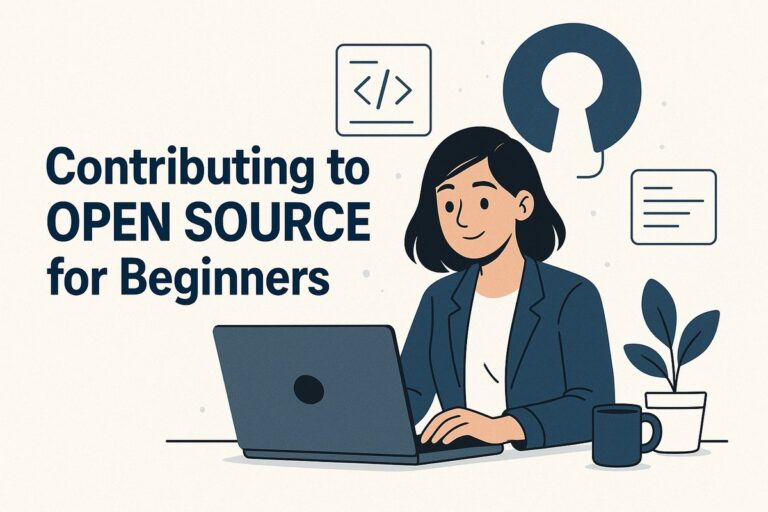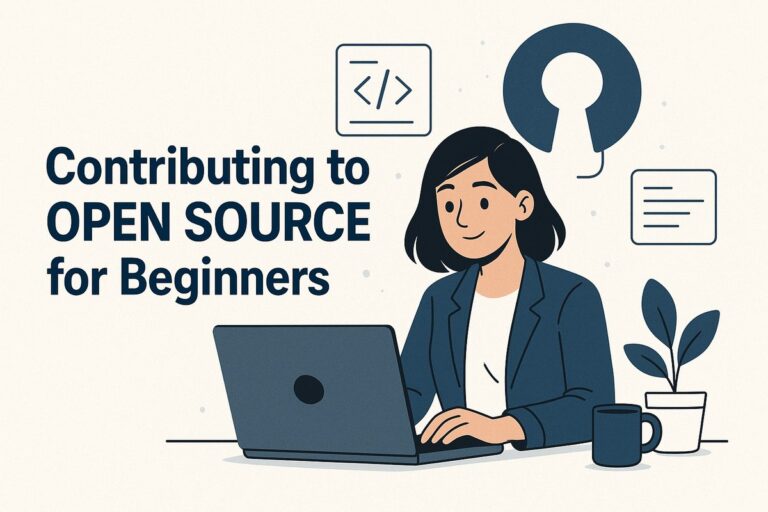
Mechanics for Coding Games
What Are Mechanics for Coding Games?
The rules and systems commanding a game’s operation and the player’s engagement with it are known as game Mechanics for Coding Games. Controlling player actions, environmental reactions, and game world interactions are the basic building blocks that define them. Game mechanics give the gaming experience shape and coherence whether it be how a character jumps, how adversaries assault, or how the player scores points. In coding terms, logic, algorithms, and real time updates create interactive behavior
Starting with fundamental game mechanics and physics-based simulations, this article discusses the main categories of game systems. It clarifies theoretically how every mechanic operates and how contemporary game engines let it be used in code. Having knowledge of these mechanisms is necessary for creating interesting, workable games whether you are constructing a basic platformer or a physics-driven puzzle game.
Reasons Game Mechanics Count in Coding
In game development, Mechanics for Coding Games must be coded into systems that operate properly, respond to inputs, and produce a unified user experience; they are not simply ideas. Poorly designed mechanics can result in imbalanced gameplay or annoying controls well implemented mechanics provide easy, natural, and pleasurable player experiences. Mechanically, from a programming point of view, linked to functions, physics engines, artificial intelligence, and input handlers all have to operate faultlessly with one another. Coders must consider like both designers and engineers to realize these systems.
Core Mechanics for Coding Games
2D / 3D movement systems
Players typically have their first encounter with a game through movement mechanics. In 2D games, this typically comprises left and right walking, crouching, and jumping. Forward/backward motion, strafing, climbing, and camera-controlled direction are all examples of movement in 3D games. Coding movement sometimes includes joining with physics for more fluid, more realistic movement capturing input transforming the player object and Unity, for instance, employs Rigid body physics to move characters via force or velocity other engines might use manual position modifications every frame.
Collision Detection and Response
Collision detection allows the game recognize encounters like a player touching a wall, a bullet effecting a target, or a character collecting a coin. Often, this is achieved employing more sophisticated colliders that specify the shape of objects, bounding boxes, or spheres. Once a collision is discovered, the game reacts appropriately by halting motion, initiating a damage event, or gathering an object.
Damage and Health Systems
The vigor of characters, foes, or even objects is controlled by health and damage mechanics. A normal implementation includes a health variable that declines upon damage taken by an entity and could activate more events such death sequences or animations. Damage sources such weapons or hazards healing goods and status effects might all be included in this method. Coders should build this system to be modular so as to provide flexibility for several kinds of damage, opponents, and powerups.
Item Systems and Inventories
Inventory mechanics allow players to gather, control, and deploy goods. From as basic as collecting health kits to as sophisticated as handling gear in an RPG, this might be accomplished. Usually using arrays or lists, inventories can have qualities like type, quantity, durability, or specific effects on each element. Coders have to create interfaces for engaging with these objects as well as ways to present them to the player. Often data driven, a strong inventory system makes it simple to add new item kinds or alter their behavior.

Physics-Based Mechanics for Coding Games
Gravity and Jumping
In physics-based games and platformers, gravity is crucial as it influences character fall and jump. Usually, gravity is represented by a constant downward force applied to objects every frame. Jumping is the temporary addition of an upward force or velocity to offset gravity. Code can be changed in timing, jump height, and multi jump techniques to have a range of results. While in more basic frameworks developers manually implement gravity in the update loop, in engines like Unity Rigid body components automatically manage gravity.
Projectile Motion
Like bullets, arrows, or thrown objects, objects moving via the air are controlled by projectile mechanics. Realistic projectile motion generates a curved trajectory by taking into account gravity and perhaps drag. This is usually achieved in games with collision detection to decide when the projectile hits something as well as velocity vectors that change over time. Aiming mechanics may be included, too, as computing the required angle and power to strike a target. Coders frequently apply basic physics equations or the physics engine offered by the game system.
Dynamic Analysis of Rigid Bodies
Rigid body mechanics replicate how solid objects interact and move. This cover turning, bouncing off objects, sensing collisions, and exerting forces. For games including natural motion like rolling balls, falling boxes, or collapsing buildings, rigid body simulation is perfect. Physical features like mass, drag, and material friction may be assigned using physics engines such Unity’s PhysX or Godot’s built in engine. The engine then manages how those bodies react under the action of forces, therefore sparing developers from painstakingly creating realistic physics.
Bounce and Friction
Physical substances in a game world have characteristics of friction and bounce. Like a player striding on several surfaces, friction lowers the speed of objects sliding against one another. Bounce governs how much an item rebounds after a collision such as a ball striking the ground. Usually adjustable in physics tools given to colliders are these values. Coders may change these parameters to produce various effects, like low-friction ice floors, highly bouncy rubber balls, or stone blocks with no bounce at all.
Input and Control Devices
Keyboard and Mouse Inputs
On desktop platforms, most often control games using keyboard and mouse inputs. Usually, developers assign particular keys for in game activities such movement or spacebar for jumping. 3D games sometimes use mouse input for camera control, aiming, or object selection. Dealing with these inputs calls real-time recording of keyboard and mouse events, then conversion of these events into game world activities. Most game engines have integrated input managers that streamline this procedure and let programmers set named actions and dynamic configuration of keys and mouse buttons.
Gamepad interfacing
Console games depend on gamepad help; increasingly, PC gamers appreciate it. Multiple buttons, joysticks, and triggers on modern controllers give players exact control over their movements and actions by offering analog input. Integrating gamepads entails scanning connected devices, reading their input values, and correlating them with game features. For cross-platform controller compatibility, many engines like Unity and Unreal offer APIs or plugins. Developers have to make sure inputs are remappable and present on-screen instructions matched with the detected device.
Controls for Touch and Mobile
Unlike keyboard or gamepad input, touch interfaces demand great planning of onscreen control elements such virtual joysticks, buttons, or gesture areas. Developers often use the platform’s SDK or a mobile ready engine like Godot or Unity with mobile plugins to detect several touch points and distinguish between brief taps and long presses. Especially in action games or those needing precision, responsive touch input is crucial for mobile gaming.
Developing Reactive Control Logic
Regardless of the technique of input, the control mechanism needs to be smooth, sensitive, and dependable. Poorly timed inputs or lag between a command and its execution might render a game unplayable. Developers use input buffering to guarantee rapid presses are not missed and employ approaches including interpolation and frame rate independence to make character movement fluid. Debouncing, input filtering, and sensitivity settings further improve the control experience.

Overview of Input Types and Their Use Cases
| Input Type | Platform | Example |
| Keyboard & Mouse | PC/Desktop | FPS or RTS games |
| Gamepad/Controller | Console/PC | Action-adventure, platformers |
| Touchscreen | Mobile/Tablets | Puzzle, strategy, casual games |
| Motion Controls | VR/Console | VR rhythm games, fitness games |
| Voice Commands | Smart Devices/Voice UI | Voice-based puzzle or trivia games |
Artificial Intelligence Mechanics for Coding Games
Pathfinding
The method by which an AI controlled entity travels from one point to another avoiding obstructions is pathfinding that is, calculating the best route. A and Dijkstra’s Algorithm are among two of the most frequently used Mechanics for Coding Games. A is great for real-time games as it employs heuristics to give promising paths precedence. On a grid-based map or navigation mesh, these algorithms let opponents or NPCs traverse intricate environments. Many engines offer built-in pathfinding libraries, but custom coded these systems can serve particular needs like dynamic environments or moving targets.
Enemy State Machines and Behavior
This modular design lets readable artificial intelligence logic be scaled. Hierarchical state machines or behavioral trees can help more complicated systems arrange logic neatly. By employing AI like this, programmers may mimic lifelike behavior patterns ranging from basic guards walking a route to intelligent bosses adjusting their attacks.
Artificial Intelligence and Decision Tree Scripting
Developers have great influence over how artificial intelligence reacts to game events using decision trees and scripting tools. AI scripting in more sophisticated games might include utility-based systems that assess several elements health, distance. Nonprogrammers can create behavior using visual aids or straightforward logic scripts thanks to scripting, therefore facilitating experimentation with various AI personas or methods.

Animation and comments
Animation of Character and Sprite
Sprite sheets are used in 2D games frame by frame to bring characters to life. Bone rigs in 3D games provide for more complex movement. Animation state machines which trigger various states such walk, run, jump, or attack depending on gameplay conditions often govern animations. Maintaining immersion depends on smooth transitions between animations, hence blending techniques and timing corrections are used to avoid unexpected actions.
Particle Systems and Visual Effects
Visual effects (VFX) improve a game’s aesthetics and reaction; explosions, fire, magical spells, and more. Particle systems which simulate numerous tiny images or particles acting together are a standard means of producing these effects. From smoke clouds to shimmering stars, particle properties including size, speed, gravity, and hue can be modified. Often reactive to player actions, these effects strengthen gameplay mechanics. For example, a shining trail might follow a speeding character; alternatively, an enemy could disappear in a particle burst when defeated.
Audio Cues and Sound Effects
Delivery of feedback and creation of ambiance both depend heavily on sound. Every action whether hopping, shooting a weapon, or opening a chest should result in an equivalent sound effect. Players are also directed by auditory cues, such as footsteps signifying a nearby enemy or a rising tone denoting a time restriction. In code, developers manage audio using triggers and audio sources, frequently layering sounds or modifying volume depending on circumstances. Particularly in first person or VR games, spatial audio improves immersion even more.
Interface Feedback of Users
Health bars, score counts, ammo counts, and more provide the essential information the user interface (UI) offers. But UI components must also provide instantaneous feedback in response to the actions of the player. The health bar, for instance, could flash red when a player takes damage the UI could animate or vibrate if they push a button. This feedback loop guarantees players are always aware of what’s going on and improves participation. Developers sometimes design modular UI systems that may dynamically animate, scale, or refresh depending on in game events.
Game Loops and State Management
Main Game Loop Design
The main cycle keeping a game going is the game loop. It is in charge of screen rendering of the game world as well as its ongoing updating. Three basic functions processes input, updates game logic and renders the visuals define the game loop at its heart every frame. Usually, 30 to 60 times per second, in real time games this loop provides a fluid, interactive experience. While developers still manage the logic within most game engines, they handle the low-level timing of the loop. To guarantee consistent behavior on various devices or performance levels, the loop must be painstakingly created using delta time (dt) to be framerate independent.
Game States: Menu, Play, Pause, Game Over
The main menu, game play, pausing, or displaying the game over screen are examples of different states the game can be in. The game switches between the several states depending on player actions or internal events. Pressing Escape during gameplay, for instance, would bring the game to the pause state. Managing these changes depends on state machines or basic conditional Mechanics for Coding Games often used by developers.

Mechanism of Save and Load
Saving and load systems let players keep their progress and come back to it later. Saving is essentially recording game data such as player position, inventory, accomplished missions, and settings into a file or database. Loading turns this around, so returning the game to the saved condition. Additionally essential is testing load dependability to ensure data integrity and prevent broken save files.
Comparison of Popular Game Engines
| Engine | Language(s) | Best For | License |
| Unity | C# | 2D/3D games across all platforms | Free/Pro (commercial) |
| Unreal Engine | C++, Blueprints | High-end 3D games, AAA titles | Free (royalty-based) |
| Godot | GDScript, C#, C++ | Indie games, 2D & small 3D projects | Open Source (MIT) |
| Phaser | JavaScript | HTML5 browser-based games | Open Source |
| Construct | Visual scripting | No-code or beginner-friendly games | Paid tiers |
Network and Multiplayer Dynamics
Client-server versus peer-to-peer models
Multiplayer games use network architecture to link players. Client server and peer-to-peer (P2P) is the two most often used models. Maintaining the master game state and authoritatively validating player actions in the client server model, one machine serves as the server. The server receives input from clients, which then returns updates. Particularly for competitive games, this design is more stable and safer. P2P, by contrast, links players straight with every device sharing aspects of the game state. P2P is more challenging to secure and synchronize appropriately even if it lowers hosting expenses and might lower latency in small-scale games. The game style, intended platform, and budget determine which of these models is best.
Device-to-Device Game State synchronization
Coordinating game state among all linked players is one of the biggest obstacles in multiplayer creation. Every action a player takes like moving, shooting, or grabbing an item must be seen on all close real-time devices. Developers reduce the apparent impact of network delays by interpolating and predicting. Keeping everything in sync also demands attention to detail such as maintaining consistent random numbers or handling object spawning in the same order on all clients.
Predicting and lag processing
Lag results from slow or erratic internet connections that cause a player’s activity and the game’s response to lag. Developers employ methods like lag compensation and client-side prediction to lessen lag’s harmful effects. A player, for instance, could see their character immediately fire a weapon the server then handles the shot a few milliseconds later. Should the server validate the action, it looks smooth otherwise, a repair might happen. Another technique is interpolation, which preserves continuous movement by filling in the spaces between server changes. These methods demand exact timing and rollback mechanisms to avoid desyncs and cheating.
Conclusion
Through this essay, we looked at the basic elements that make games engaging, interesting, and practical. Starting from basic game mechanics such movement, collision, and scoring we grew into more complex systems including physics, artificial intelligence, and animation response. On various systems, we looked at how inputs are handled and emphasized the importance game loops and state control have in keeping smooth and ordered gameplay. Advanced ideas like scripted logic, multiplayer networking, and engine choice emphasized how developers working behind the scenes construct reactive and scalable systems. Choosing the appropriate design patterns, scripting languages, and tools and constantly testing, improving, and polishing developers may realize their creative ideas. Knowing and developing solid Mechanics for Coding Games is the basis of successful game development whether you are new or an experienced coder.
Frequently Asked Questions
Which game engine should beginners use?
For many novices, Unity and Godot offer excellent beginnings. With a sizable community, many tutorials, and applications, Unity is a versatile programming language. It excels in 2D and 3D projects.
How ought I properly inspect mechanics?
Good testing calls for first isolating and evaluating parts independently before full integration. Fast iteration and behavior verification can be achieved using debug tools, test cases, or sandbox environments. For example, if assessing a jumping mechanism, reduce the backdrop to only the player character and a platform. Log entries, onscreen debug text, and frame by frame playback should be used to help one to understand what is going on behind the scenes.
Could one reuse mechanics over several game genres?
Absolutely. Many basic systems are genre agnostic and can be subtly adjusted for reuse. Think, for instance, how a basic movement system or health/damage logic could fit into platformers, shooters, roleplaying games, and even puzzle games.
How essential is polish in fundamental mechanics?
Even for the most fundamental equipment, Polish is absolutely essential. A polished leap behaves consistently, has clear visual and audio feedback, and replies under different conditions. Polish helps to set a prototype apart from a viable, fun game by guaranteeing consistent behavior, fixing timing, smoothening animations, and improving transitions.
Read more about Coding on Technospheres.





